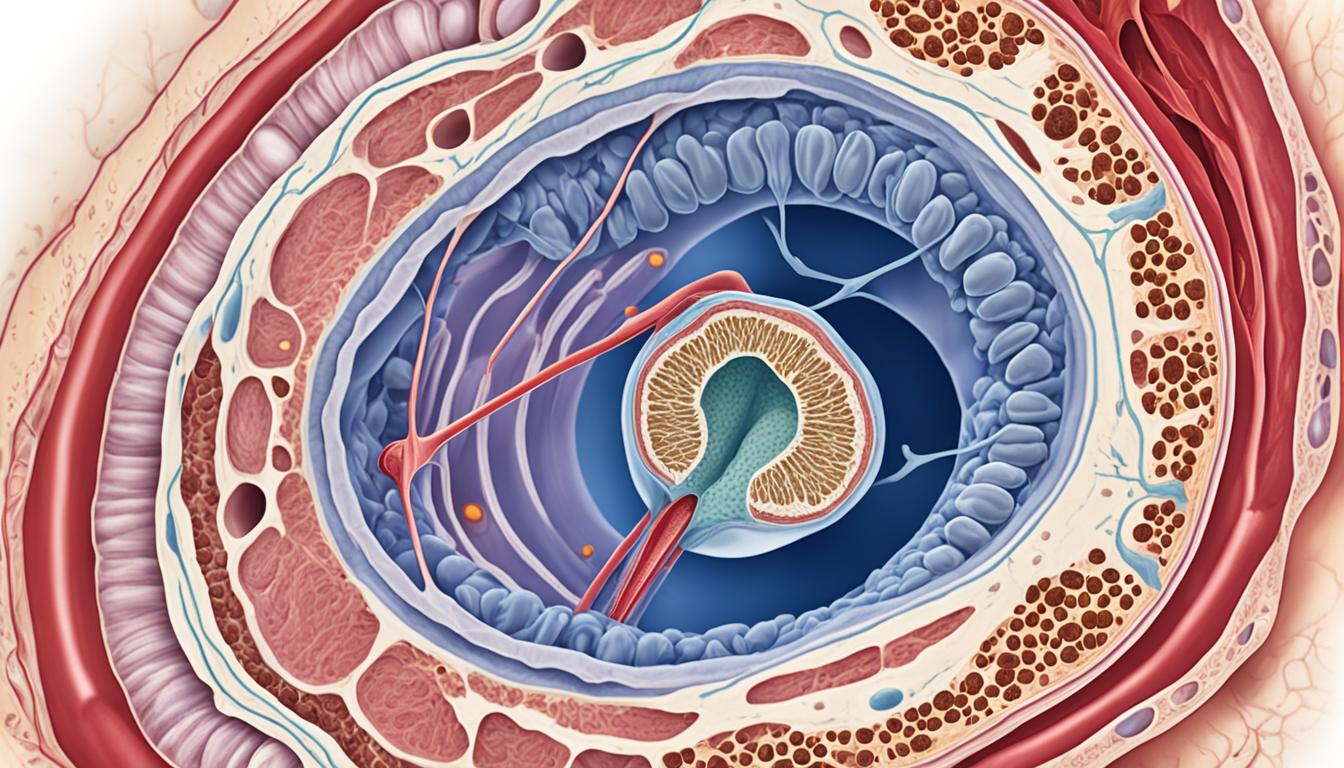Pilonidal cysts impact up to five percent of people, making them pretty common. They form in the sacrococcygeal area and bring symptoms like cellulitis, sinus tracts, and abscesses. Most often, these cysts are not dangerous. Still, in very rare cases, they may turn cancerous, affecting 0.1% of people.
The best way to handle pilonidal carcinoma is through surgery with wide margins. However, the outcome of this treatment is not usually good. Only about 55% of people survive for five years without the disease. Moreover, it tends to come back more than half the time. The use of chemoradiotherapy as an extra treatment is not reliably effective.
Key Takeaways:
- Pilonidal cysts are common and typically located in the sacrococcygeal area.
- They can lead to cellulitis, recurrent sinus tracts, and abscess formation.
- Malignant transformation is rare but possible.
- Surgical resection is the treatment of choice for pilonidal carcinoma.
- Prognosis for pilonidal carcinoma is poor, with a low survival rate and high recurrence rate.
Pilonidal Cyst Symptoms and Causes
Pilonidal cysts are common and can be painful. It’s key to know their symptoms and causes early on. This helps in getting the right treatment fast.
Symptoms of Pilonidal Cysts
A pilonidal cyst often looks like a small hole or pit in the skin. It’s usually in the buttocks’ fold. This cyst may have hair inside and can get infected. This leads to an abscess. Key symptoms include:
- Pain
- Swelling and redness
- Pus or discharge
- A bad smell
If you notice these signs, see a doctor right away.
Causes of Pilonidal Cysts
We’re not sure what causes these cysts. One idea is that hair in the natal cleft leads to a bad reaction. This causes ongoing inflammation and cysts to form. Certain things raise the risk of getting these cysts. These include:
- Being obese
- Having a sedentary lifestyle
- A family history of pilonidal cysts
- Having a lot of body hair
- Getting skin trauma or irritation in the buttocks’ fold
Knowing about pilonidal cysts can help you prevent them. Avoid sitting for a long time. Wear clothes that are not too tight. Keeping clean is also very important. If you have any symptoms, see a doctor as soon as possible. Doing this can help you avoid serious problems.
Diagnosing and Treating Pilonidal Cysts
Doctors mostly diagnose pilonidal cysts by talking with the patient and checking them physically. This helps them find out if someone has this condition.
To treat pilonidal cysts, doctors often have to drain them and take out the bad tissue. This is done through surgery. Using surgery to remove the cyst correctly is very important. Doctors use special ways to fix the skin area after removing the cyst, like Bascom Cleft Lift and other methods.
There are also things you can do at home to help or avoid pilonidal cysts. Keep the area clean and dry. Try not to sit for too long or put a lot of pressure on the area. It’s also important to stay at a healthy weight. In some cases, the doctor might give you antibiotics to stop an infection. Another way to treat pilonidal cysts is with stem cell therapy. But, we still need more studies to know if it really works well.

